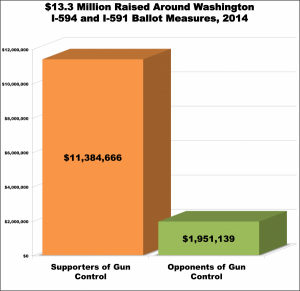This year’s presidential election between Democratic nominee, Senator Hillary Clinton, and Republican nominee, Donald Trump, has only had a minor theme of gun control. Hillary Clinton in favor of background checks of gun purchasers, and Donald Trump with “unwavering support” for the Second Amendment. According to Martin Kaste from NPR, “The real battle over guns, though, has been waged at the state level this year—with a new emphasis on ballot initiatives”.
Because legislation to “require criminal background checks for most gun sales died in the state House of Representatives” three years ago, gun control activists have found a way around by having background checks on state ballots. And well—it’s working. Gun control groups themselves have had to utilize persuasive communication and a key rhetorical device of Identification for the state ballot questions over background checks. J.T. Stepleton, a researcher with the National Institute on Money in State Politics claimed, “While the NRA has shifted its money into lobbying and independent expenditures for specific candidates, the gun control groups are putting more emphasis on ballot questions”. Trying out an initiative process, petitioners have been on a mission to “place new firearm restrictions on their state’s ballot” this year. Supporters of the Second Amendment have found tremendous financial support on gun control ballot measures, and the differences in monetary support for pro-gun-control committees compared to gun-rights committees is a difference as great as $11.4 million raised to promote gun control and a mere $2 million raised by gun activists.
Pro-gun groups have put forth money into opposing ballot initiatives, but the financial support that has been fundraised by gun-control groups is almost not even comparable. Shannon Watts, founder of Moms Demand Action for Gun Sense in America, explains, “They said we’re going to pivot, and go to the states and companies, and we’re going to get them to put laws and policies in place that point Congress and the Supreme Court in the direction that this nation is headed in—and that’s exactly what we’ve done”. This initiative from pro-gun-control groups has plenty of momentum, and it is only a matter of time until we either see laws greatly change—potentially saving countless lives—or backtracking into a non progressive carousel, while keeping laws and policies in the same place Congress and the Supreme Court have been for years.



